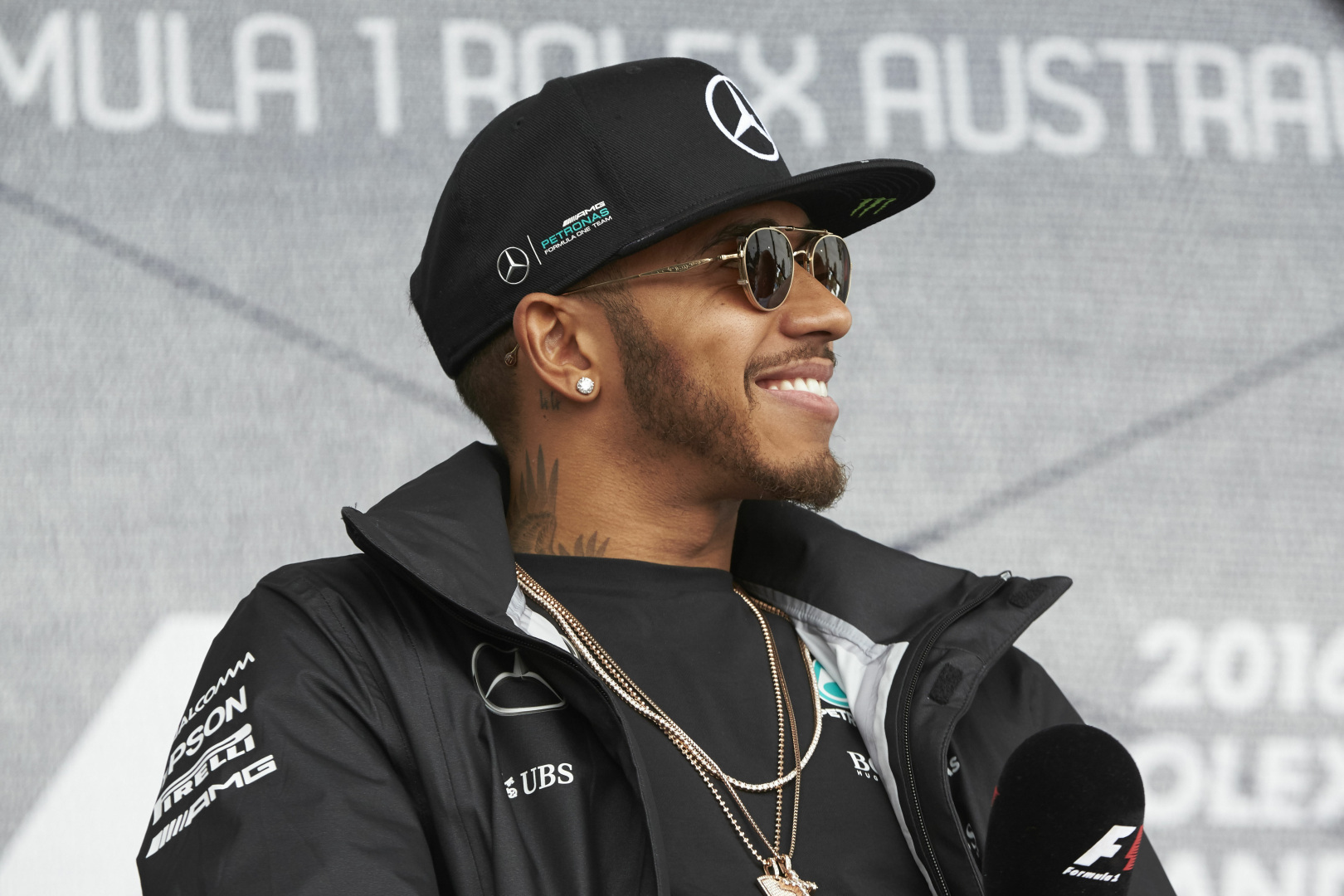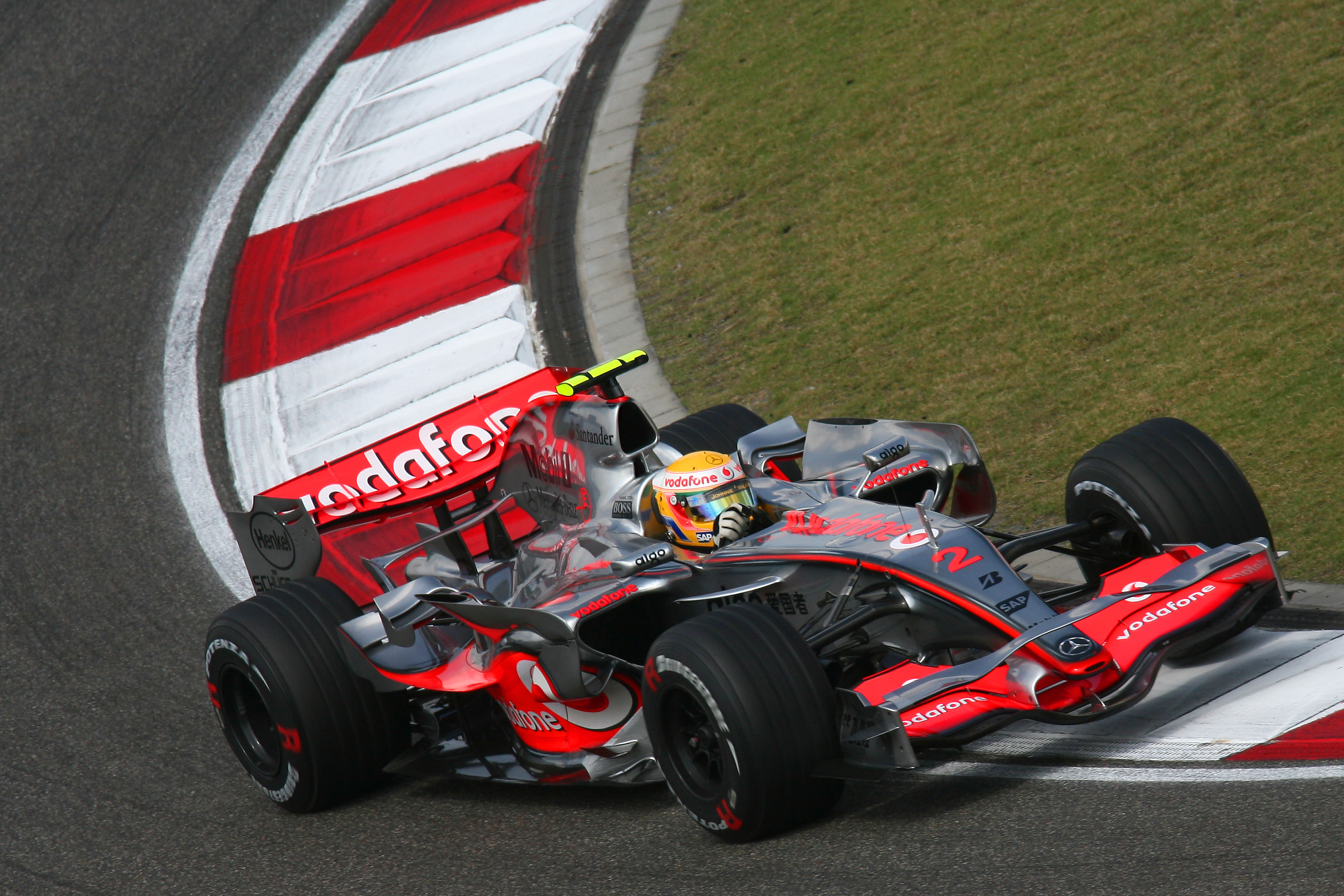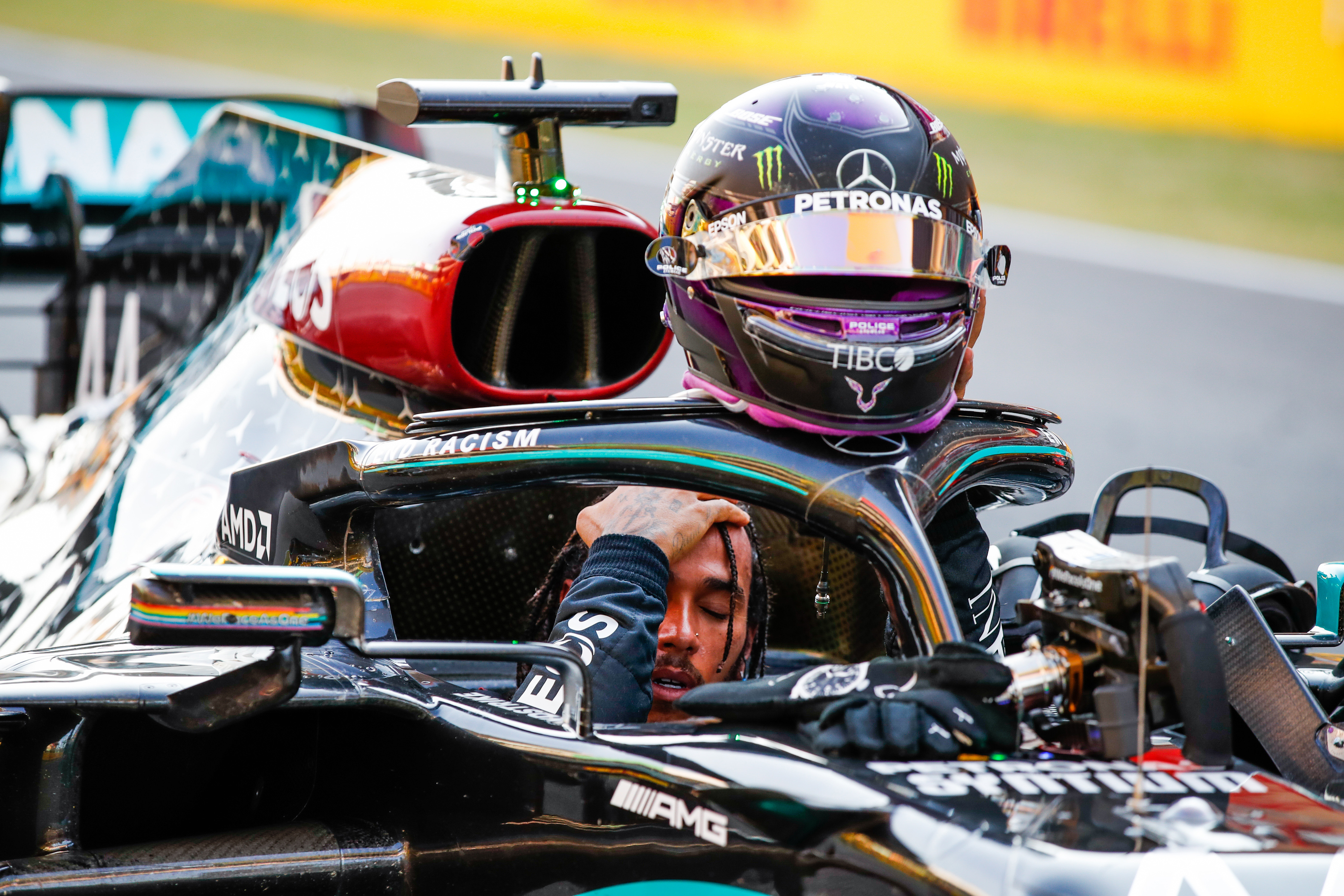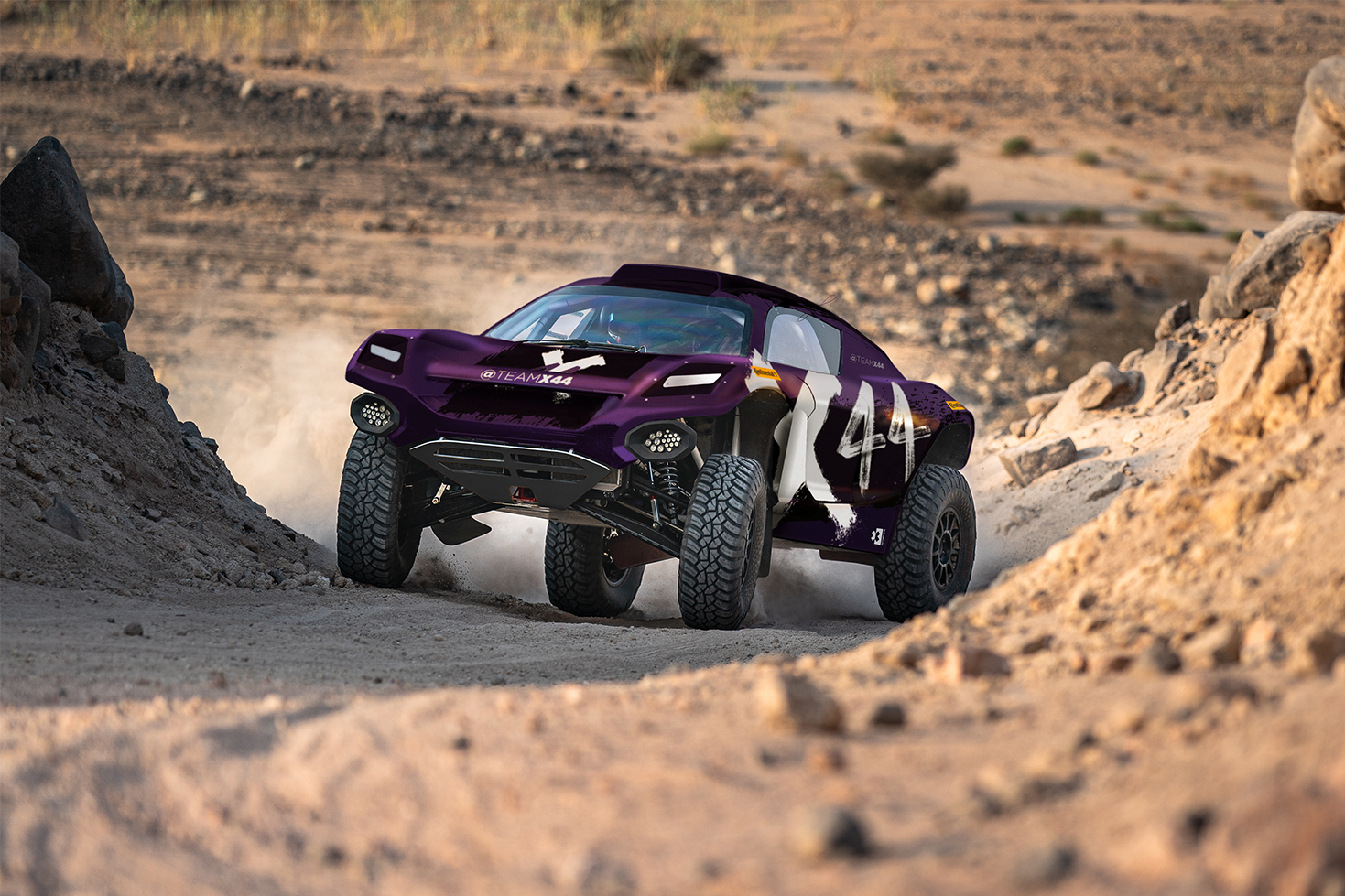Up Next

Next week, Lewis Hamilton may match one of Michael Schumacher’s seemingly inviolable records. By the end of the season he will almost certainly have surpassed it, while securing a (Schumacher-equalling, again) seventh title. These numbers are part of why Hamilton is going to go down as one of the greatest drivers in history.
But he has said many times before that he views his legacy as being the impact he can have off track, not just what he achieved on track. While we’re waiting for a new Mercedes deal that may keep Hamilton around for three more seasons, the reality is his career is in its final stretch. So it’s time to assess where his legacy will come from.
Hamilton’s extracurricular exploits have become well-known over the last few years, mainly because of his entry into the fashion industry and a layered lifestyle that’s dragged him between Europe, Asia and America, sometimes even in between races.
He’s always said it’s a great source of motivation and energy for him because he’s able to embrace a creative outlet and that complements what he does in the racing world, rather than detracting attention and energy from his ‘day job’.
Investing more time into creative pursuits seemed a no-brainer once he finally stopped racing, but that’s not going to leave much of a legacy in the world where he made his name. Running a race team that puts promises of greater diversity into action and taps into Hamilton’s megastar profile to raise awareness of climate change – that’s another story.
Over time, Hamilton has become more conscious, more world-aware, and more convinced that he should use his platform to improve issues that he considers important. The two primary examples are Hamilton’s commitment to raising awareness of racial discrimination, and his desire to promote more eco-friendly ways of living, to help fight against climate change and protect the environment and world we live in.

So it seems fitting that he views his X44 Extreme E venture as an opportunity to address both those topics. It is the first proper glimpse of how he wants to use his profile within motorsport beyond being an F1 driver: amplifying efforts to create lasting, meaningful change.
“Most athletes, we all have brand partnerships, so there’s one element of ultimately wanting to be a part of something growing forwards,” Hamilton says.
“My goal is one day to own a company of some sorts, so it’s part of that. But then more so I’m just really impressed with their [Extreme E’s] aims, with their goals, they’re very much aligned with what I’m really focussed on right now.
“I think it’s going to be amazing. We’ve done a lot of work in the background, we’ve had great conversations with Alejandro [Agag, Extreme E founder], and I honestly can’t wait. I’m going to look to drive my own car! Since I own the team.
“There’s drivers in the past who were team owners who were in Formula 1, Sir Jackie, I think that’s something really exciting. I think I’ve learned a lot from Toto [Wolff, Mercedes F1 boss], so maybe he can mentor me how I manage my team best.
“But I love that it’s diverse, each team pushed to be diverse. I said that we needed to have females in it, so we’ve got female drivers now, which is awesome. I’m glad that I can contribute in a positive way, hopefully.”
We’ve seen a shift in priorities from Hamilton over the last 12 to 18 months, beyond just his plant-based diet, but the sale of his private jet, the switch from combustion-engine cars to electric and hybrid vehicles, encouraging his major fashion and automotive industry partners to enforce more sustainable initiatives within their businesses.
Hamilton says his personal efforts have now offset his F1 career’s carbon footprint – if true, that’s an impressive achievement.
“This is long-term, rest-of-life changes that I’m making in my life,” he says. “Undoubtedly it’s difficult because there are people who are like ‘yeah, but you race a Formula 1 car around every weekend’. Probably some of it is education, because not everyone knows the footprint that our sport currently has and what we’re doing in terms of trying to improve that. But what I’ve tried to say is ‘look, I’m making a lot of changes in my personal life’.
“Like, I don’t drive any of the cars that I own any more, I only drive my EQC [electric Mercedes SUV], and I have a Smart electric car, and if I get picked up at the airports I request to have an electric car, it’s not always an electric car that I can fit all my luggage in.
“I’m trying my best, whilst still I’m doing what I love doing, and I think helping to put pressure on people here in this sport, because they’ve got lots of areas which we can be way more sustainable, and I think I’ve got more power to shift it from within, rather than retire and do it from the outside.”
That is absolutely true, but as he admitted himself a few weeks ago on Instagram: “The last step for me will be when I step away from this sport and can focus fully on helping heal the world to provide a better future for our kids and our kids’ kids”.
It’s apparent that means stepping away from driving rather than turning his back of motorsport as a whole, because this industry is where he can still make an enormous difference. It’s evident that he sees an opportunity to one day throw himself into things that he’s only doing on a part time basis at the moment.
After all, Hamilton is first and foremost a racing driver. That means certain things simply can’t be tackled in the way that he wants. He will always ultimately have to restrict certain commitments.

That will not be the same once he is no longer racing, which is why it seems less likely he’ll follow other former drivers into television punditry or similar roles. That’s not to diminish or criticise those that do end up in those positions, it’s just a reflection of the fact that Hamilton views his post-F1 life differently.
Hamilton wants to use everything he has at his disposal to raise awareness and improve the industries that he’s in. People may scoff at what he says and does. They may think it’s completely disingenuous. But it isn’t. This is the person he wants to be, and Extreme E is a good step towards that – and proves his interests lie beyond what he does when he himself is the person in the spotlight.
Within that lies the push for equality that Hamilton is a part of. As well as entering a team in this series to raise awareness of climate change, he wants to use it as a platform to improve BAME representation in motorsport. That probably won’t be on the driver side but why not on the team personnel side?
He’s already made it clear that he wants to use his efforts so far to make that a reality. You’re probably aware by now that Lewis established The Hamilton Commission in association with the Royal Academy of Engineering. The bigger picture from that is to work out what the problem areas are within motorsport and why it isn’t as diverse as it should or could be, and what can be changed and improved within that.
And Hamilton has indicated he wants to use the learnings from that process to inform how he composes his X44 team.

“In terms of recruitment, we’re working on that right now, trying to find and create opportunity, particularly for minorities, which you often don’t see very many in the paddock in terms of mechanics and engineers,” he says.
“We’re looking at potentially working with the Royal Academy of Engineering in London. Hopefully, the Commission will also contribute to us doing a better job, and understanding the barriers, and we’re hopefully going to be working on scholarship programmes, so we have youngsters coming through.”
Hamilton often gets attacked for his stances on the environment, or human rights – usually an accusation of hypocrisy given he is a racing driver who preaches eco-friendly mantras, or complains about racism in a sport that’s made him famous (so it can’t be all bad, where was this years ago, etc.). These are not valid arguments to make.
But if he created a race team and didn’t put any of what he speaks about into practice – that would be fair to question. Yet, once again, Hamilton has action to back up his words.
He is more than just an inflated ego with a big social media following. It’s just that while he’s racing social media is his best opportunity to tackle wider issues. The Hamilton Commission was the first sign of that changing as Hamilton shifts his focus to the longer-term, with the results expected in early 2021 and recommendations then to be put to UK motorsport and engineering authorities. X44 is something a little bit more tangible in terms of putting things into practice, too.
More ventures that have an eco-friendly and diversity-driven ethos are surely going to be a part of Hamilton’s future. As will others, such as working to create a more affordable route into motorsport for young children – he has expressed a specific desire to help with that.
So, welcome to the first stage of the rest of his career: using his platform as an incredible athlete with enormous reach and huge potential for partners to raise awareness and make a difference.
Yes, he holds the most power while he’s an active racing driver, but that does not mean he will slow down when he stops racing himself.
On the contrary. It’s more likely that this is just the start.





